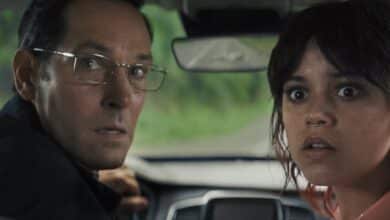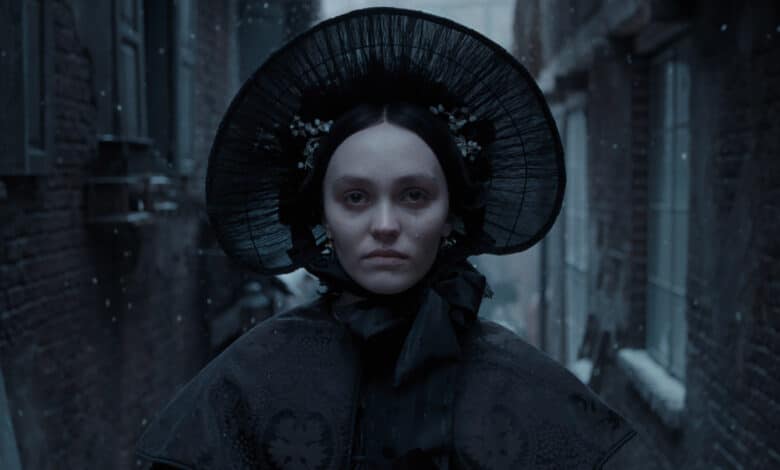
Right off the bat, I need whoever is reading this to understand that I don’t like Bram Stoker’s Dracula, and with the exception of the 1922 silent film, I don’t think there is a good version of this story out there… until now.
Robert Eggers has unleashed a mesmerizing new vision of Nosferatu, at once faithful to F.W. Murnau’s 1922 silent masterpiece and intriguingly tangled in the sexual madness and gothic fervor of Bram Stoker’s Dracula. Much like his previous work (The Witch, The Lighthouse, The Northman), Eggers uses evocative period detail and atmospheric dread to immerse us in a midnight world where desire, decay, and death converge. Anchored by a fierce performance from Lily-Rose Depp as the entranced yet unbreakable Ellen, Nosferatu pulses with haunting imagery, unsettling shadow play, and a deeply sensuous undercurrent—reminding us that the most alluring monsters often lurk in the dark corners of our own fears and desires.
If Dracula is famous for his erotic allure, then Count Orlok is the raw, primal embodiment of predatory lust. In Eggers’ version, Bill Skarsgård’s Orlok strikes a chilling figure—gaunt, ghastly, and often half-hidden in cryptic silhouette. He radiates an animal magnetism tainted by rotting menace, looming like a specter above Transylvania’s foreboding mountains and eventually prowling the fog-shrouded streets of Germany. Eggers underscores Orlok’s presence with a lingering sense of intrusive desire: Ellen’s uncanny visions, Thomas Hutter’s dawning horror, and the feverish nightmares of everyone in Orlok’s path coil together into a tapestry of fear, made all the more potent by the vampire’s implied sensual power.
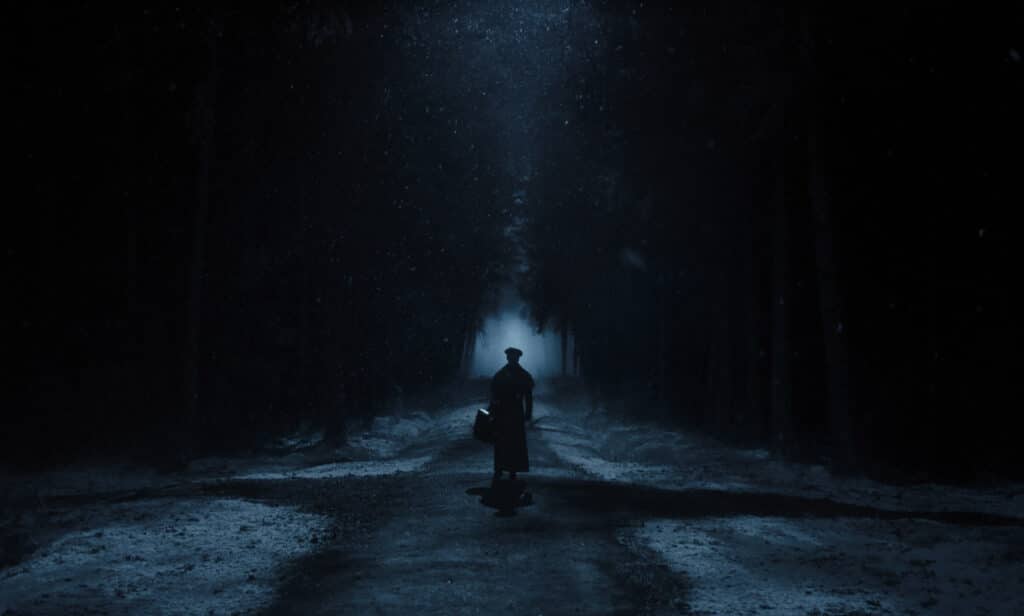
Nicholas Hoult stars as Thomas Hutter in director Robert Eggers’ NOSFERATU, a Focus Features release.
Credit: Courtesy of Focus Features / © 2024 FOCUS FEATURES LLC
Skarsgård’s transformation isn’t always as memorably monstrous as Max Schreck’s rodent-like menace or Klaus Kinski’s tragically unhinged predator, but there’s a hushed terror in the way his Orlok slithers through shadows, an echo of plagues and unholy appetites. In a film so focused on the creeping unknown, his fleeting on-screen moments, draped in half-darkness, make him a living nightmare rather than a mere villain.
If Orlok represents the magnetic pull of death, Nosferatu gains its humanity from Ellen Hutter, Lily-Rose Depp’s fierce reinterpretation of the Mina character. More than a victim or an object of desire, Ellen is both entranced by and fighting against Orlok’s crushing will. Depp’s portrayal—simultaneously fragile and ferocious—anchors the movie in desperate reality. She channels the character’s mounting terror and dark fascination, turning her plight into the film’s emotional heartbeat. Something that sets this apart from other adaptations and even the source material.
In Nosferatu, Orlok’s hold over Ellen functions as a metaphor for the cycle of grooming and abuse that can begin in childhood. Ellen’s difficult home life leaves her vulnerable to Orlok’s manipulations; he preys on her emotional and physical insecurities, slowly eroding her sense of self until she believes his twisted version of normalcy. Much like a child manipulated by an abuser, Ellen becomes conditioned to see Orlok’s domination as both inevitable and deserved. Throughout the film, we watch her grapple with this internalized shame and fear, only to ultimately reclaim her body and agency. By confronting Orlok—both symbolically and literally—Ellen breaks free from the deeply ingrained idea that she must accept pain and humiliation. Her arc becomes one of transcending the confines of her past and illustrating the profound resilience required to escape the cycle of abuse. Sadly, personally, I think this would have hit me more if Ellen were to survive, but it seems to be held back by being beholden to Bram Stoker’s work.
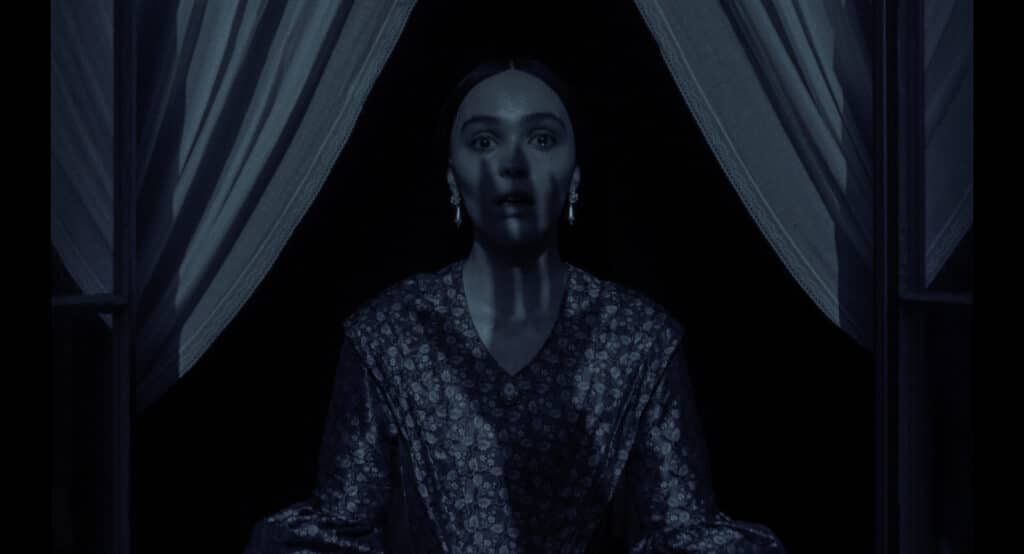
Lily-Rose Depp stars as Ellen Hutter in director Robert Eggers’ NOSFERATU, a Focus Features release.
Credit: Courtesy of Focus Features / © 2024 FOCUS FEATURES LLC
Unlike traditional “damsel” portrayals of Mina, Ellen refuses to be merely a pawn of supernatural forces or patriarchal dismissals. She is haunted by vivid nightmares and suffocating visions, yet steadfastly determined to confront the evil that stalks her. In an interpretation that leans decidedly into the psychosexual charge of vampire lore, Ellen’s plight becomes a grand, unnerving journey into the threshold between freedom and eternal enslavement.
Working again with cinematographer Jarin Blaschke, Eggers drowns the frame in creeping darkness, desaturated colors, and a bluish pallor that evokes early cinema’s monochromatic chills. The shadows themselves feel alive, threatening to engulf characters at every turn. Where other Draculas go for regal pomp, Eggers’ Orlok is a spectral grim reaper, accompanied by scurrying rats and an ominous hush—a viral spread of dread capturing the aftermath of global trauma, much like Nosferatu’s original 1922 context in the wake of the Spanish Flu.
Sound design and music, courtesy of Robin Carolan, underscore this gloom: faint groans echo through catacombs, the wind howls over rotting vessels, and distant chimes merge with rattling carriage wheels. It’s less about loud jump scares than a constant, pervasive tension that creeps under your skin—symbolizing Orlok’s insidious hold on the protagonists’ minds.
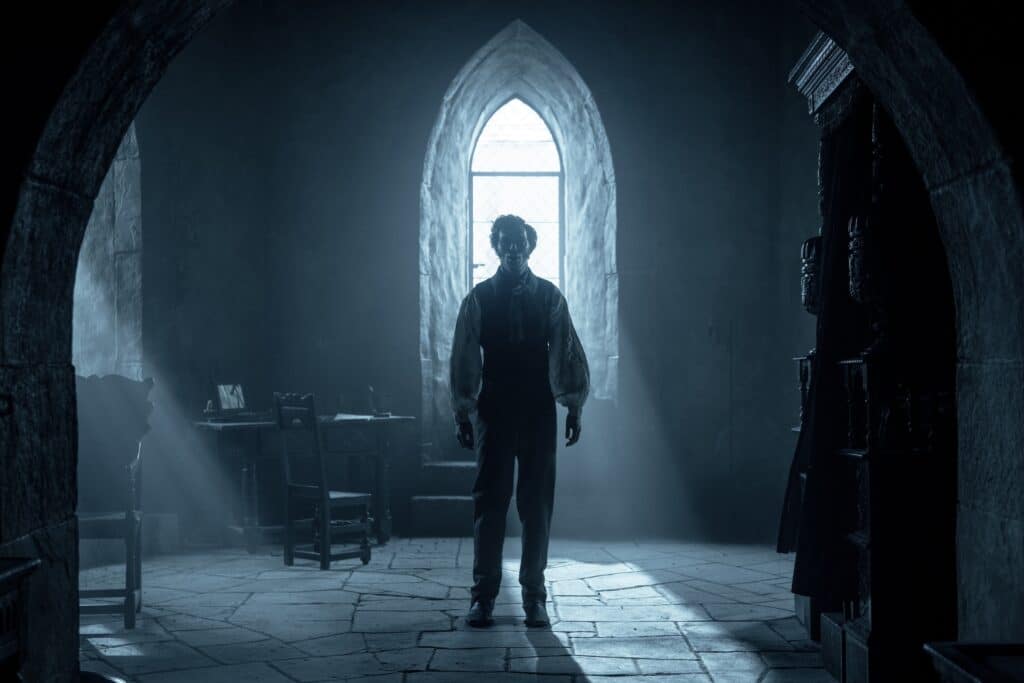
Nicholas Hoult stars as Thomas Hutter in director Robert Eggers’ NOSFERATU, a Focus Features release.
Credit: Aidan Monaghan / © 2024 FOCUS FEATURES LLC
While Bill Skarsgård and Lily-Rose Depp dominate the film with their mesmerizing pas de deux of predator and prey, Nosferatu also features an inspired supporting cast. Nicholas Hoult’s Thomas Hutter, saddled with the famously thankless “Dracula’s solicitor” role, injects a genuine earnestness into his character’s spiral of disbelief. Willem Dafoe, an Eggers mainstay, shows up as Dr. Von Franz— a Van Helsing-esque figure— sporting archaic dialogue and a grand theatrical flair that teeters between comedic and ominous, reminiscent of his gonzo energies in The Lighthouse. I think Von Franz shines best when he escapes both the original film’s boundaries and the shadow of the inferior Dracula book.
Yet it’s Depp’s performance that truly defines the film’s moral and emotional core, as Ellen battles not just a monster but the systematic disbelief of the men around her. If the original Mina was eventually saved from darkness by her beloved, Eggers’ Ellen seems far more self-possessed, driven as much by her own simmering desire as by her fear.
Eggers doesn’t merely rehash Murnau’s silent classic or Stoker’s text. Instead, he fuses their gothic foundations with his signature brand of slow-burning menace and grim authenticity, paying homage to German Expressionist sensibilities while reveling in the story’s inherent sensuality. The result is distinctly Eggers: unrelentingly moody, historically meticulous, yet streaked with moments of sly humor—a film that feels unshakably anchored in the real fears of a repressive society.
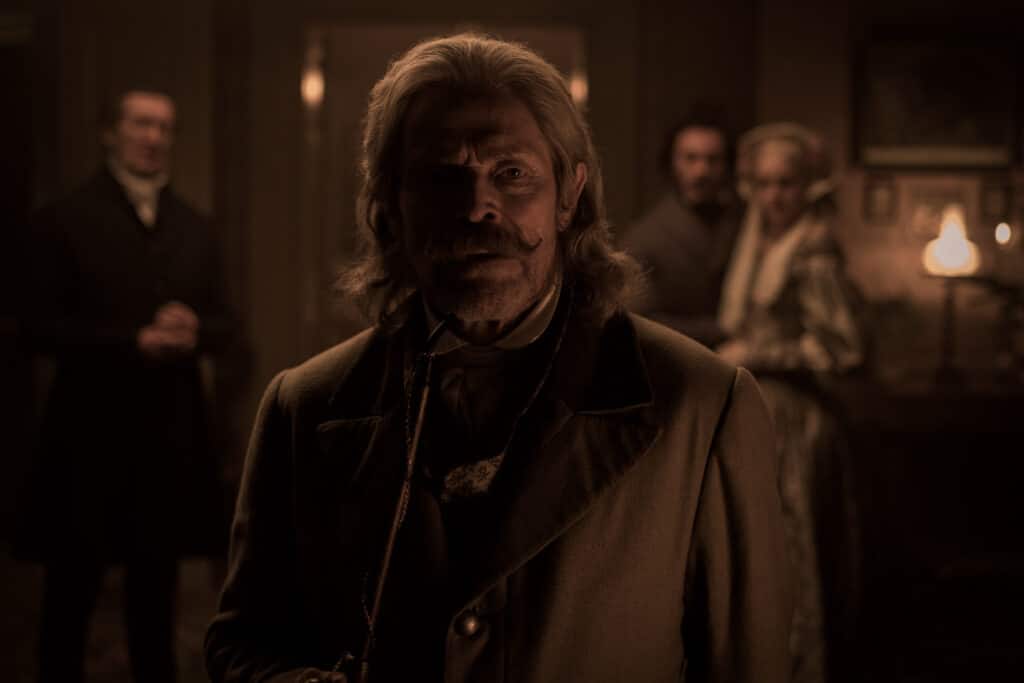
(l-r.) Ralph Ineson stars as Dr. Wilhelm Sievers, Willem Dafoe as Professor Albin Eberhart von Franz, Aaron Taylor-Johnson as Friedrich Harding and Emma Corrin as Anna Harding in director Robert Eggers’ NOSFERATU, a Focus Features release.
Credit: Aidan Monaghan / © 2024 FOCUS FEATURES LLC
Some might find the slow pace and bleak tone claustrophobic or yearn for a more traditional sense of confrontation with the Count. Skarsgård’s Orlok is best before you see him clearly, and the film, at times, feels like it’s purposefully withholding a full measure of its villain’s power. That said, the deliberate gap between what you see and what you sense is precisely what gives Nosferatu its haunting charge.
With Nosferatu, Robert Eggers contemplates the inexorable link between desire and destruction in the Dracula mythos, spinning a lavishly morbid tapestry of sex, decay, and defiance. Lily-Rose Depp delivers a career-defining turn as the story’s desperate heroine, while Bill Skarsgård’s Count Orlok remains an elusive, intangible horror, more of a creeping plague than a conventional villain. Cloaked in shadow and laced with a muted eroticism, the film may tread familiar ground, but Eggers imbues every cobblestone and corner with foreboding, proving that this century-old vampire tale can still creep under your skin.
4.5/5 Stars
![NOSFERATU - Official Trailer [HD] - Only In Theaters December 25](https://i.ytimg.com/vi/nulvWqYUM8k/hqdefault.jpg)


